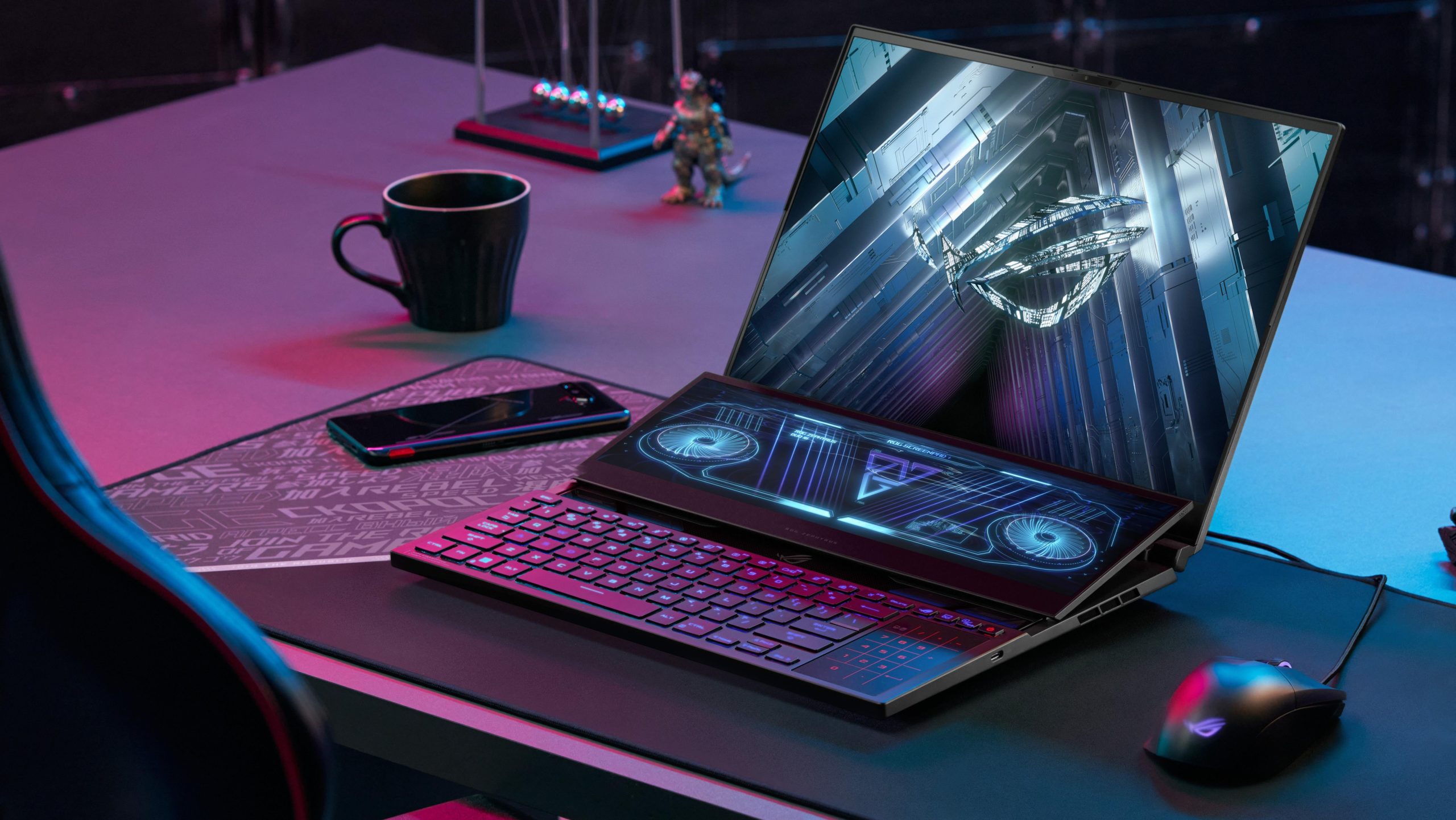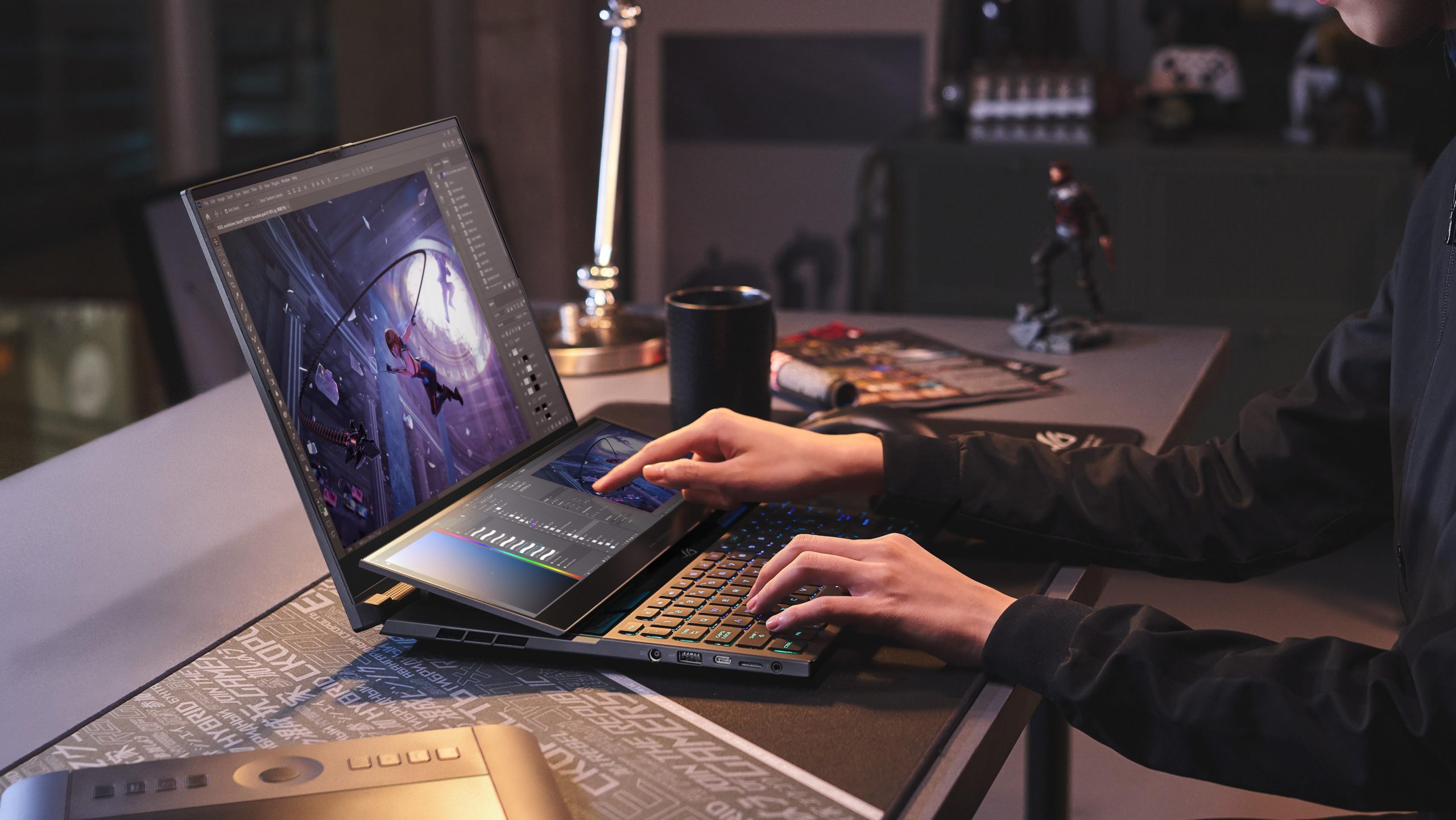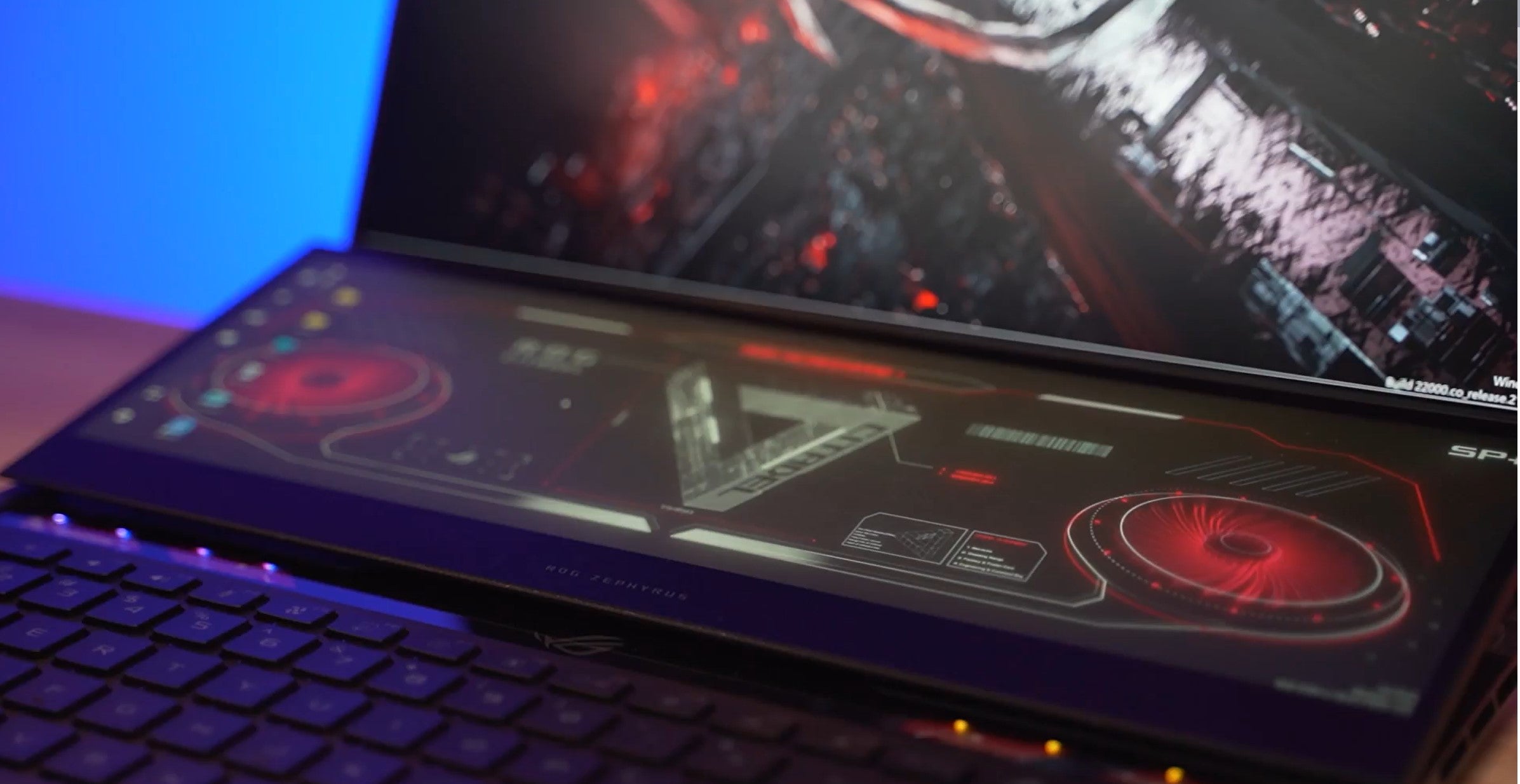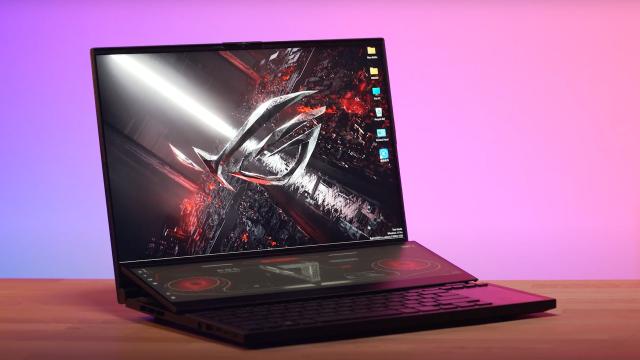When ASUS released the ZenBook Pro Duo, its first dual-screen laptop, in 2019, it seemed inevitable that others would follow closely behind with their own takes on the multi-screen laptop. And for a while, it looked like a war was brewing — Dell revealed its own concept, HP released a short-lived dual-screen gaming laptop, and even Intel got in on the fun.
But so far, an exciting new market filled with dual-screen models from various brands hasn’t materialised, and ASUS doesn’t seem to give a shit. The company is pushing on ahead, revealing at CES 2022 a new Zephyrus Duo 16, the next version of its flagship dual-screen laptops purpose-built for gamers and content creators.

ASUS is sparing no performance expense, equipping the Zephyrus Duo 16 with up to an AMD R9 6900HK CPU paired with Nvidia GeForce RTX 3080 Ti graphics, up to 64GB of DDR5-4800 storage, and up to 2x 2TB M.2 PCIe 4.0 SSD in RAID 0. And when you need to upgrade your components (not that you’ll need to anytime soon), ASUS says the RAM and storage drives are easily accessible.
These powerful components are kept cool by a material ASUS calls Thermal Grizzly Conductonaut Extreme liquid metal. What sounds like something made in a NASA lab is actually a material with a 17x higher thermal conductivity than regular thermal paste, ASUS claims. This allows the Duo 16 to run 15 degrees Celcius cooler than normal and ramps the TGP to 150W so you can run more demanding workloads for longer without throttling.

The primary screen was expanded to 16 inches and comes in three 16:10 configurations, two of which immediately caught my attention. The first is a 2560 x 1600-pixel mini-LED panel with Adaptive Sync, Pantone colour calibration, and a blinding peak brightness of 1,100 nits. Rapidly gaining adoption on TVs, tablets, and laptops, miniLED gives you the best qualities of OLED (deep black levels, high contrast ratios) without the risk of burn-in.
The other display option is what ASUS calls its Dual-Spec Panel. It does something we haven’t seen before: increase the refresh rate from 120Hz to 240Hz when you shift from 4K resolution to 1080p. This means you can edit photos, watch videos, or browse the web with the highest resolution, then drop down to 1080p to get the most fluid motion when you’re, say, playing a first-person shooter. How does it work? In 240Hz mode, Asus uses proprietary tech to scale the FullHD image by using blocks of four physical pixels for every single digital one. We haven’t seen the magic in person yet, but if it works as advertised, then expect others to follow Asus’s lead.

Both panels meet ASUS’ new “Nebula HDR,” a spec that requires 100% of DCI-P3 colour coverage, at least 500 nits of brightness, and a response time of 3 milliseconds or less. Minimum refresh rates are set to 120Hz for 4K or QHD, and 240Hz minimum for 1080p.
Oh right, we haven’t even talked about that strange second display located just above the keyboard. On the ZenBook Pro 16, the 14.1-inch, 4K secondary screen, or ScreenPad Plus, raises when you lift the lid before settling at a 13-degree angle so you can use it without craning your neck.
One nice change to this model is that the top of the second display sits nearly flush with the bottom of the primary panel to give the illusion of having one continuous screen. This way, you can extend your desktop downward and enjoy more vertical screen real estate without too much of an awkward gap disrupting the page. Alternatively, you can drop other windows or apps on the ScreenPad and use it as a monitor, though my favourite use for the second panel is for housing tools or a timeline when you’re editing photos or videos in Adobe suite.

The Zephyrus Duo 16 looks similar to its predecessor and isn’t much larger despite increasing from 15 to 16 inches. Still, you won’t want to lug this thing around for longer than you need to considering it measures 0.8 inches thick and weighs 3 kg. With all that space, you get plenty of ports, including two USB 3.2 Type-C ports, two USB 3.2 Type-A inputs, an HDMI 2.1, a headphone jack, an Ethernet port, and a microSD card slot.
ASUS hasn’t revealed pricing for the ROG Zephyrus Duo 16 but it is expected to arrive in Q1.
